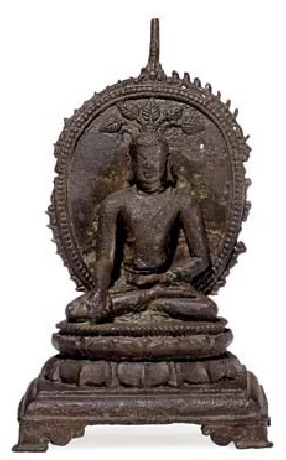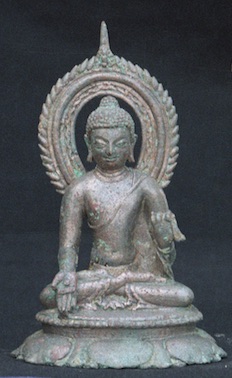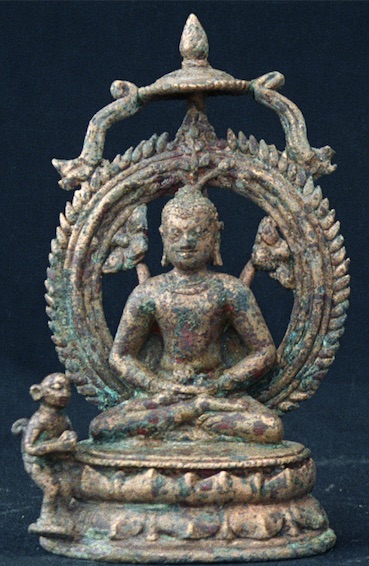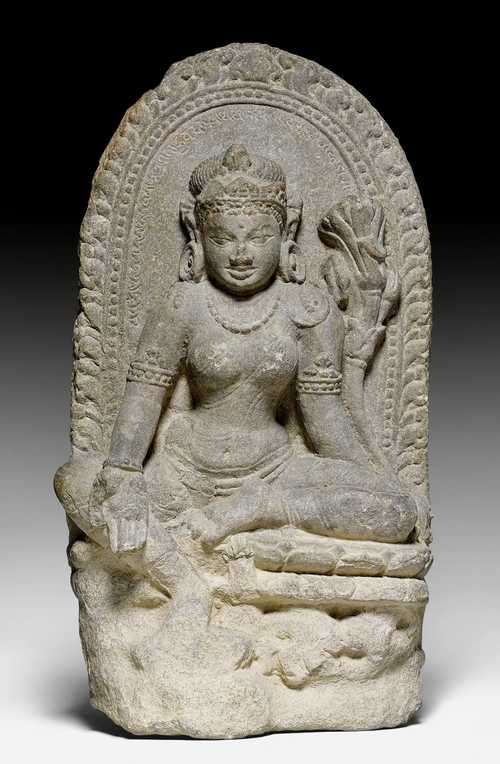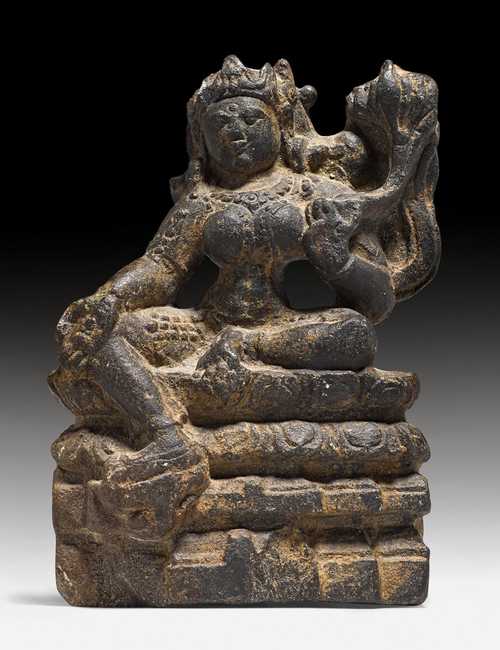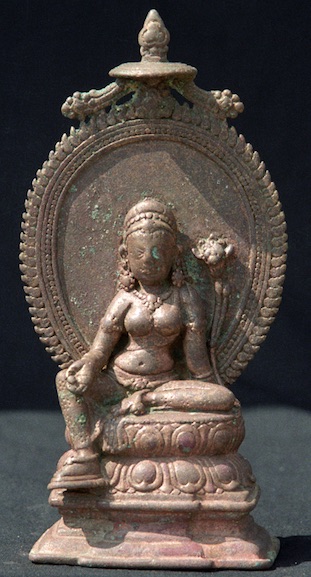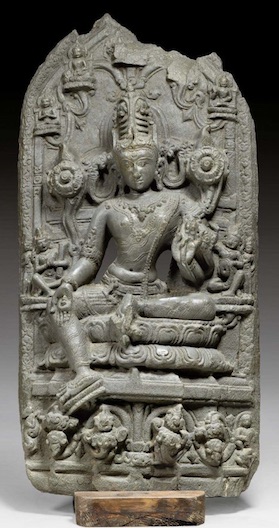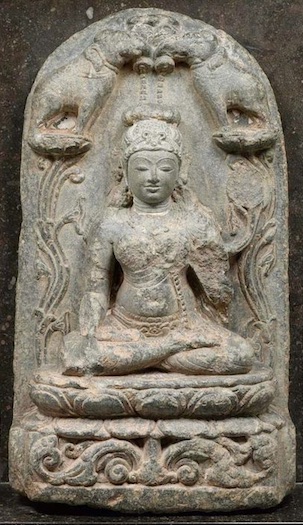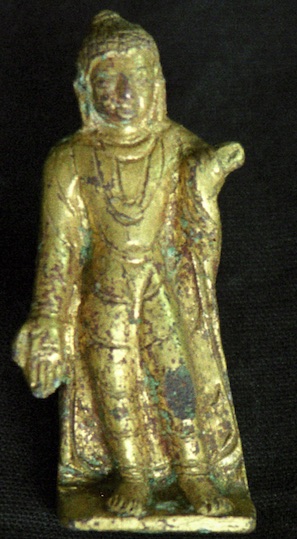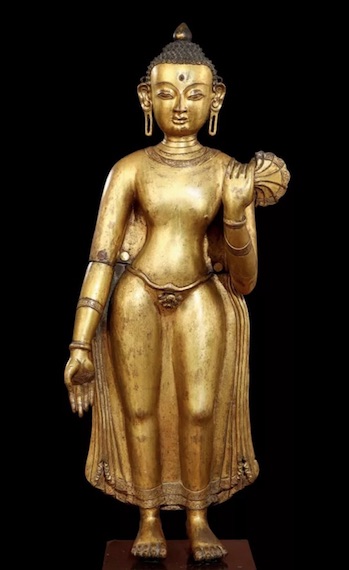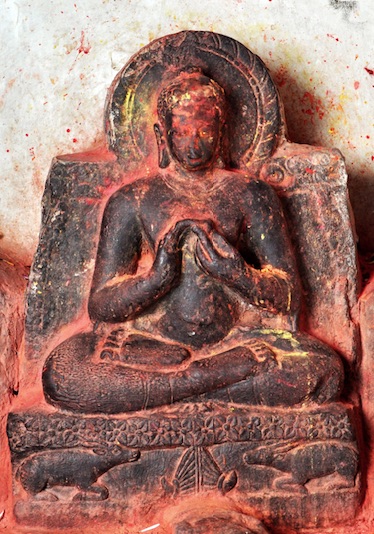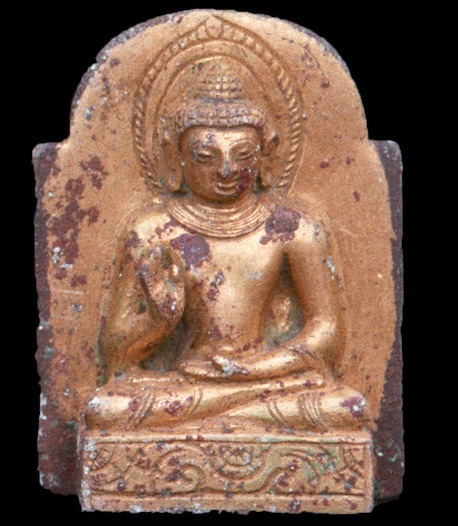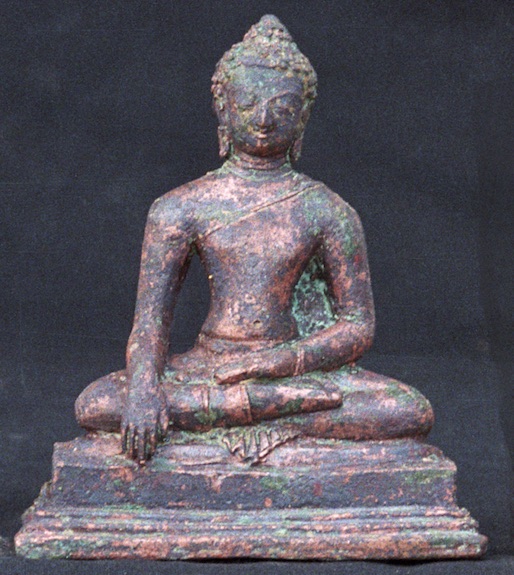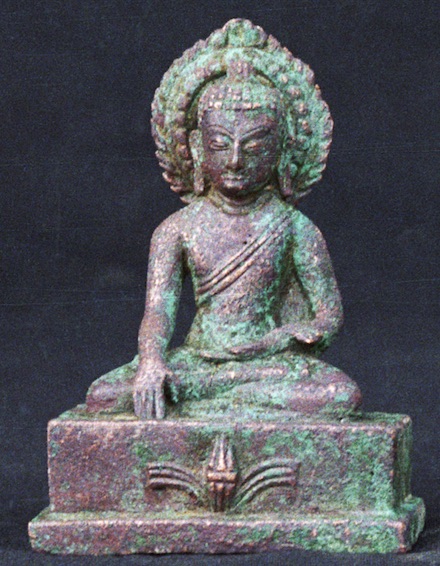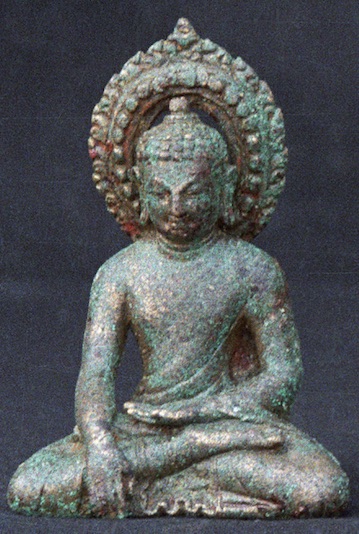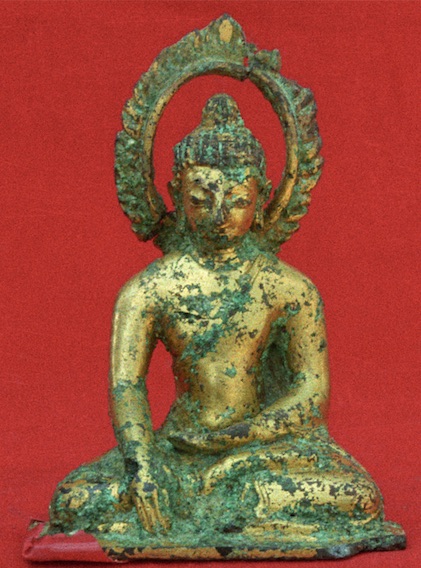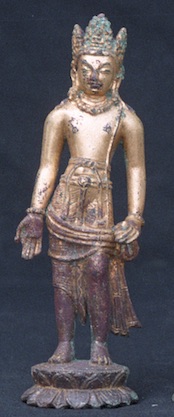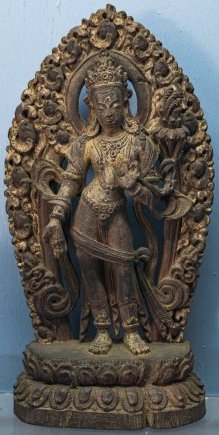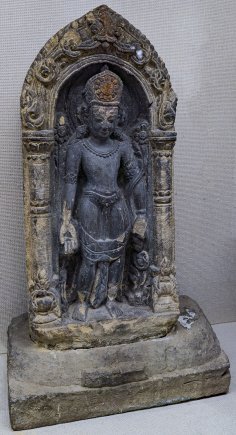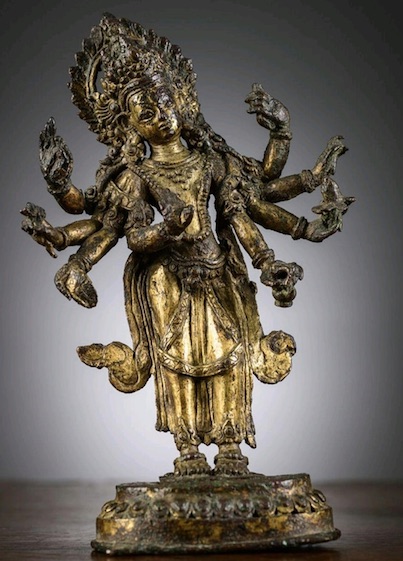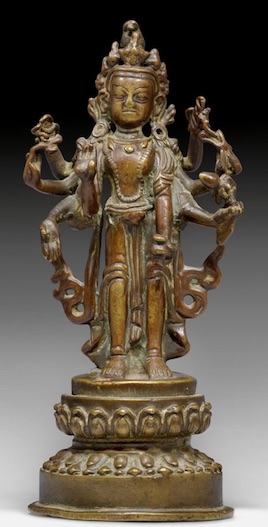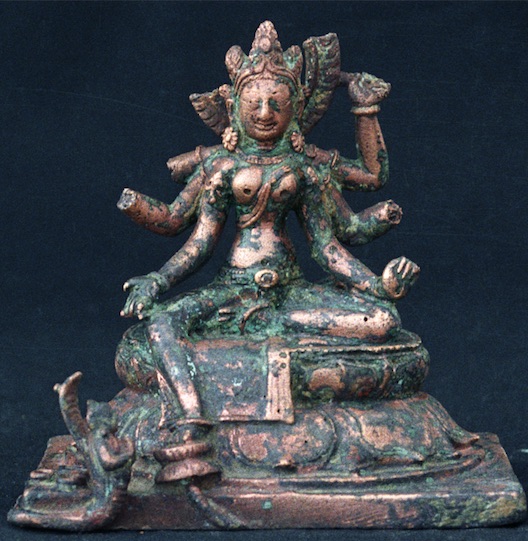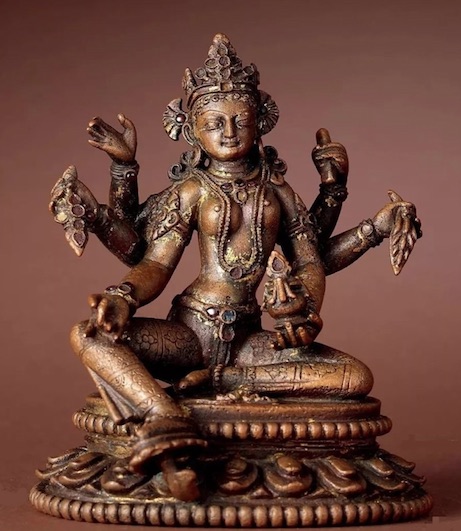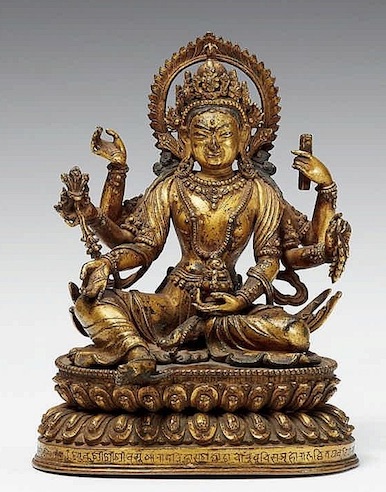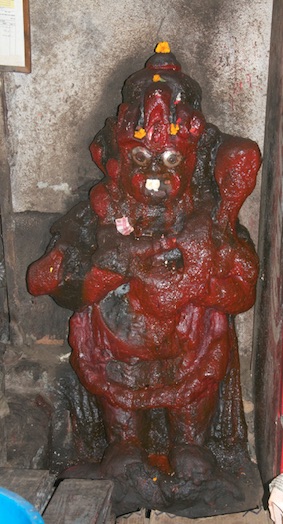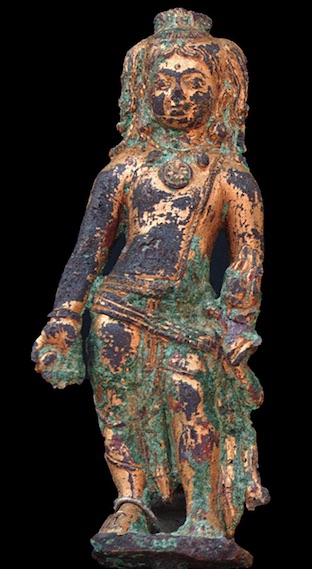
Nepal, Licchavi period?, Manjushri?, gilt copper, 7 cm, photo by Sunil Dongol, 2010, Dharmadeva Caitya, Chabahil (Kathmandu, Nepal).
The hair divided in three bunches (trishiki) is a distinctive feature of Manjushri, depicted here as a youth holding a seed or a bud in his right hand (we saw a similar object in the hand of a Manjushri – from the Potala Collection – which Ulrich von Schroeder identifies as the bud of a blue lily).
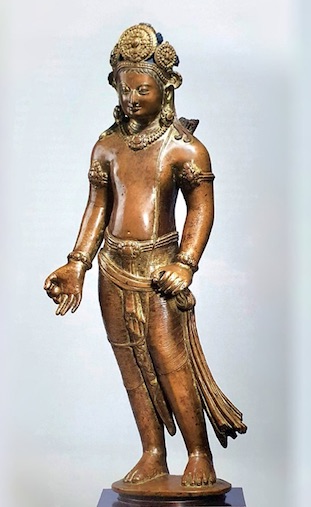
7th-8th century, Nepal, Manjushri, gilt copper, 58,5 cm, private collection, published on Lost Arts of Nepal
A similar depiction, with a large round object in the right hand and a smaller one in the other.

11th century, Nepal, Dharmasankahasamadi Manjushri, gilt copper, 12,7 cm, accession nº 68.8.26 at the Virginia Museum of Fine Art (USA).
Also known as Amitabha-Manjushri, this rare form of the bodhisattva, with a white body on paintings, sits with his legs locked and both hands in the gesture of meditation but he doesn’t hold any attribute. The above is on a stepped throne with a couple of nagas in front of it.

12th century, Nepal, Manjushri or Amitayus? (labelled ‘Amitabha’), gilt copper, size and accession number not given, photo on Lost Arts of Nepal, at the Palace Museum in Taipei (Taiwan).
A strikingly similar image.

Nepal, Manjushri, stone, 72 cm, photo by Sunil Dongol, 2014, Sri Karmaraja Mahavihara, Swayambhu (Kathmandu, Nepal).
Namasangiti Manjushri with one head and four arms, holding a sword and a bow in his upper hands, an arrow and a book missing from his main hands.

Undated, Nepal, Manjushri and consort, stone, 107 cm, photo by Sukra Sagar Shrestha, 1989.
A rare example with one head and six arms, seated with a leg pendent and holding a sword and a blue water lily in his upper hands, an arrow and a bow in the middle ones, the lower right hand displays the gesture of generosity, the left one usually holds a branch of ashoka. His consort, possibly Prajnaparamita, is seated on his lap.

16th century, Nepal, Kathmandu Valley, Manjushri, gilt bronze with stone inlay, 22 cm, photo on wisdomlib, at the National Museum of Nepal.
The caption doesn’t specify whether this figure with six arms has three or four heads. There is a three-head and six-arm form mentioned in the Manjushri Namasangiti Tantra, who usually has his hands crossed over his heart, either empty or holding a vajra sceptre each. The above makes the gesture of generosity with his right hand and presses a book against his heart with the other.

18th century, Nepal, Manjushri with two female deities (labelled ‘with Shakti’), gilt bronze, 75 cm, photo on wisdomlib, at the National Museum of Nepal.
The same iconography with, presumably, his consort/shakti to his right, holding a lotus, and Green Tara on the other side, holding a blue water lily.
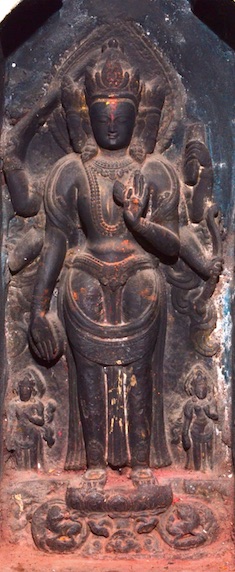
Nepal, Manjushri, Vagisvara, stone, photo by Ulrich von Schroeder, 2013.
Rarely seen in sculpture, Dharmadatu Vagisvara may have three to five heads and six to eight arms. This one holds a sword and a large book in his upper hands, an arrow (broken) and a bow in the middle ones, the lower right hand displays the boon-granting gesture, the left one holds what looks like a flaming jewel.
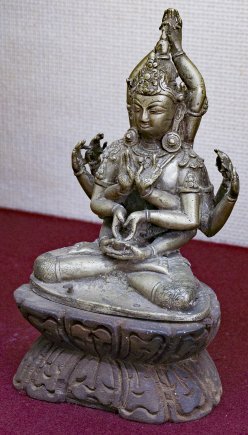
18th century, (Nepal or Nepalese work in Tibet?), Namasangiti Manjushri, bronze, 19 cm, (the lotus base probably belongs to a different work), Northern Himalayan Section on wisdomlib, at the National Museum of Nepal.
Rarely seen outside Nepal, this form of Manjushri, called Mayajala Manjushri on HAR, has one head and six pairs of hands, which represent the five tathagatas (Amitabha, Akshobhya, Amoghasiddhi, Ratnasambhava, Vairocana) plus Vajrasattva. According to John Huntington and Dina Bangdel he embodies the Arya Manjushri Namasangiti Tantra (see more on Circle of Bliss). The upper hands are held above his head to symbolise Mount Meru. The next ones hold a sword and a ritual staff (missing here) and another pair makes the gesture of debate. The main hands make a similar gesture before his chest but with the palm out, the ones below pour nectar into the bowl he holds in his lowest pair of hands, which contains the head of Shakyamuni.

Nepal, Manjushri triad, stone, photo by Gerd Mevissen, 2007, at the Jana Baha in Dhoka, Kathmandu (Nepal).



